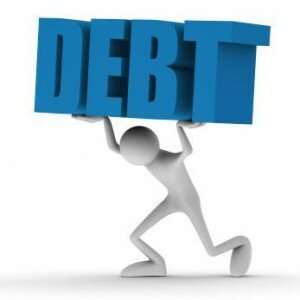 With the rising phenomenon of high school and college students deep in credit card debt, the question for each parent is, “should my teen have a credit card?” Surveys show that college freshmen have an average of $1,585 in credit card debt. This amount is certainly no joke.
With the rising phenomenon of high school and college students deep in credit card debt, the question for each parent is, “should my teen have a credit card?” Surveys show that college freshmen have an average of $1,585 in credit card debt. This amount is certainly no joke.
One college student shares her experience of how she feels strangled by debt, wishing she could just pay everything off. With three jobs and bills to pay, it’s hard to believe she’s only 19 years old.
There are always two sides to a coin, and while some parents believe that giving your child a credit card will teach them financial responsibility, others argue that they’re just not ready for it. Janet Bodnar, author of “Raising Money Smart Kids: What They Need to Know About Money And How To Tell Them”, explains that credit is not real money to teens. “It’s a license to spend, and they’re not learning how to manage money on their own.” Because of the rising statistics of teens in debt, it’s an opinion that’s well worth considering.
So how do you prepare your teen for financial responsibility? There are a couple of steps you can take before going out to the big leagues.
1. Financial education – This is where everything starts. Educate your teen about money and allow their minds to be opened about wise investing, budgeting, and even mind setting. Expose them to different kinds of media such as financial books, audio-visuals, and even seminars. One day, they will thank you for it.
2. Start with a prepaid debit card – A debit card for your teen is a smarter choice than a credit card. This gives you some degree of control since their spending will have a limit. Strike a deal with your teen such as having a set amount that should last for the month. Be strict about your rules and let them know that when they’re on their own, there won’t be anyone to give them more cash when they run out.
3. Move on to a checking and savings account with debit card – When your teen gets his first part-time job, he’ll be having money that goes straight into his account. Having these accounts will allow him and you to monitor the spending through the monthly statements. Over withdrawing can be subject to penalty, and this is a responsibility your teen will have to face. Then again, a penalty is better than a steep credit card debt.
4. Finally, the credit card – Get them a card that has a limit to the amount of debt it can incur. Be sure to discuss the monthly statements when they start arriving, but focus on how your teen is able to pay the bills off monthly. Ask questions such as “what made them charge the purchase rather than using cash?” and “have they bought anything unnecessary just because they have extra credit?”
When introducing credit cards to your teens, the most important aspect will always be financial education and maturity. Once they understand the weight of possibly getting into debt, and how they can manage their finances better, the more control they will have. Be open to your teen, and if credit cards aren’t necessary yet, there’s no need to give them one. No rush.








 Social networking sites are the new wave of the generation. People are crazy about them. And they have a lot of reason to be. Social networking sites, Facebook especially, have revolutionized the way people across the globe communicate. Making it easy to connect with friends and business connections you otherwise would not have gained contact with. However, Facebook is not all fun and games. It could be a breeding ground for financial disaster.
Social networking sites are the new wave of the generation. People are crazy about them. And they have a lot of reason to be. Social networking sites, Facebook especially, have revolutionized the way people across the globe communicate. Making it easy to connect with friends and business connections you otherwise would not have gained contact with. However, Facebook is not all fun and games. It could be a breeding ground for financial disaster. When you’re in your 20’s, it feels like the world is at your feet. You’re single, you have a regular job (and sometimes even high paying, if you’re smart), and you have a lot of cash to burn. It only seems natural to go ahead and get that car loan, rent a classier apartment, spend your dollars on shopping or vacations, and live a financially carefree life.
When you’re in your 20’s, it feels like the world is at your feet. You’re single, you have a regular job (and sometimes even high paying, if you’re smart), and you have a lot of cash to burn. It only seems natural to go ahead and get that car loan, rent a classier apartment, spend your dollars on shopping or vacations, and live a financially carefree life. The economic crisis by now has impacted everyone and the majority of people have way too much debt. While it will take some time to clear all this debt, there are ways to reduce what the debt is costing you.
The economic crisis by now has impacted everyone and the majority of people have way too much debt. While it will take some time to clear all this debt, there are ways to reduce what the debt is costing you. Earlier this year Chase Bank updated their mobile app to include some pretty cool features.
Earlier this year Chase Bank updated their mobile app to include some pretty cool features. OH the glory and wonder of Black Friday!
OH the glory and wonder of Black Friday! This article is part of the Go Banking Rates “
This article is part of the Go Banking Rates “


